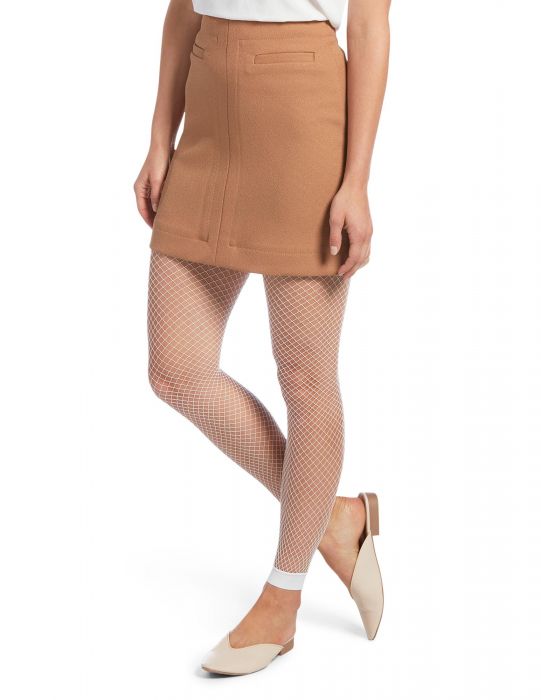Despite being such a basic item, tights still baffle so many women, likely because they’re such confusing garments to begin with. After all, tights are not quite stockings, but they can’t be classified as leggings, either.
With that in mind, knowing a few basic fashion rules can help you choose the right kinds of tights to complete your outfit. So check out our definitive guide to choosing and caring for them below.
Don’t Skimp on the Quality of Your Tights
Women’s tights are a wardrobe staple, which makes them widely available and incredibly easy to find. However, that doesn’t mean that you should settle for any old pairs off the rack or from the discount bin. If you want tights that stay intact and hold their shape after more than two washes, you’ll need to spend a bit more on quality brands.
Indeed, cheap tights not only rip and tear easily, but they’re also more prone to stretching and sagging. Additionally, they can suffer from uneven color distribution that can make them look unsightly when worn.
That said, any brands made in Italy are usually a good bet, as the country is known for specializing in them. Other indicators of high-quality tights include features such as reinforced toes as well as ladder-proof or run-resist yarns.
Learn Your Deniers
A denier is a unit of weight that measures the fineness of certain fabrics such as nylon, silk, or yarn. In terms of hosiery, it is often used to describe the thickness and density of a particular pair.
Generally speaking, a higher denier often indicates thicker, more opaque tights. To give you a better idea of the differences between deniers, here’s a more detailed breakdown:
<10 DEN Hosiery
Also known as bare leg tights, these are thin, sheer, and provide little to no coverage. Hence, blemishes, scars, and veins will still be visible with tights of this denier. If you have the legs for them, though, <10 DEN tights offer a nice smoothing effect and are suitable for wearing to work or on warmer days.
10 to 20 DEN Hosiery
Available in both matte and glossy finishes, tights in this density are thick enough for indoor daily use, such as climate-controlled offices or similar environments. As such, these tights hit the sweet spot when it comes to everyday wear. When worn, they can also give off the illusion of younger, more elastic skin, making them an ideal choice for mature women. They also offer a bit of coverage for small marks and spots.
21 to 40 DEN Hosiery
Thick and semi-opaque, 21 to 40 DEN hosiery offer warmth and a high level of coverage. They’re best paired with cold-weather outfits and can have a slimming effect on the calves, especially if worn in dark colors. They are also more durable and less prone to runs.
41 to 69 DEN Hosiery
These tights take the density up a notch, making them suitable for winter wear indoors or outdoors. Because of the higher level of opacity they provide, these tights offer adequate coverage even for the most noticeable varicose veins. When worn, they can also have a slimming effect on the calves and knees.
70 to 99+ DEN Hosiery
A phenomenal alternative to leggings, 70 to 99+ DEN hosiery offer complete leg coverage. They’re thick enough to protect your legs from the elements and strong enough to toss in the wash with all your other clothes.
Get Them in the Right Size
Contrary to popular belief, tights are not one-size-fits-all. In fact, getting them in a size that’s too small will reduce their flexibility and make them more prone to tearing.
The good news is that most tights manufacturers include a size chart or guide, indicating the height and hip ranges for every pair they offer. So to get a good fit, you’ll want to measure your height and hips correctly.
Don’t Wear White Tights
White tights on women have the same effect that white socks do on men, in that they’re only appropriate up to a certain age. They’re also difficult to match with other garments and get dirty fairly quickly. In most cases, you’re better off getting a few pairs in black or bold colors.
Handle Your Tights with Care
Some tights are durable enough to withstand a round or two in the washing machine. Others require a decidedly lighter hand.
Overall, handwashing is by far the best way to care for delicate items, including tights and other hosiery. You’ll want to use lukewarm or cold water when you do, too, as heat can ruin their elasticity. Additionally, wringing them will make them lose their shape. Meanwhile, hanging them up will stretch them out. For best results, lay them out flat on a towel to dry.
With these rules in mind, choosing the right tights doesn’t have to be rocket science. Try them out to give yourself the illusion of added height or to add a pop of color to your outfit today!

















